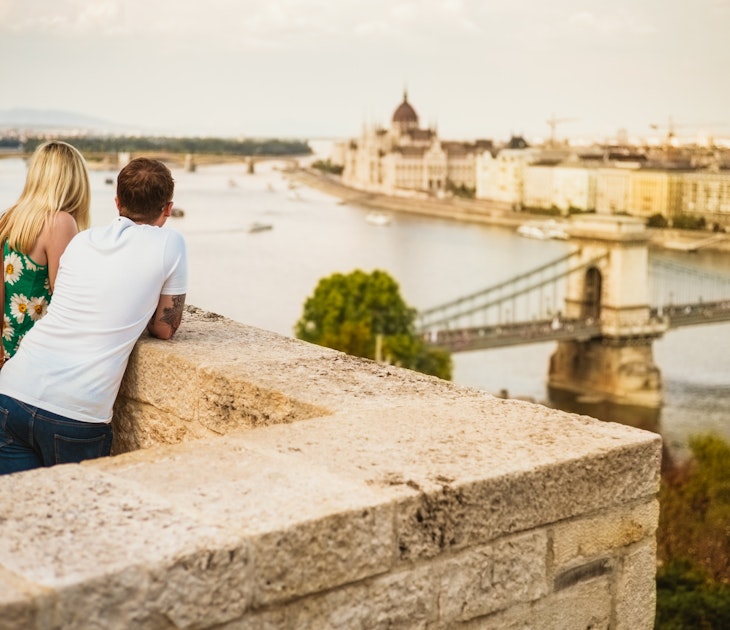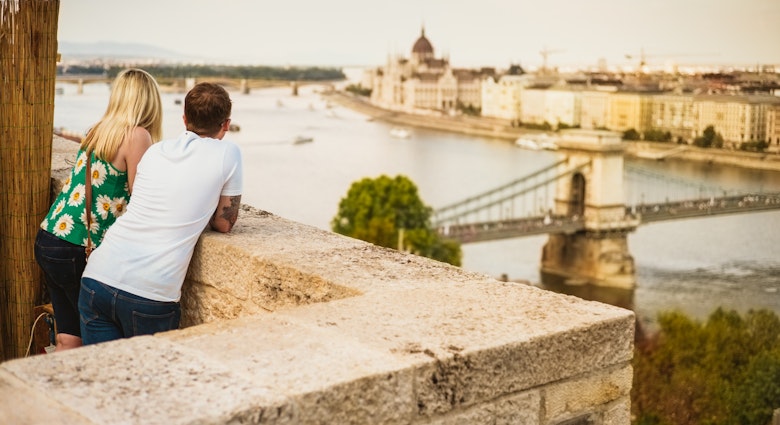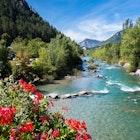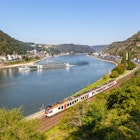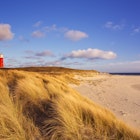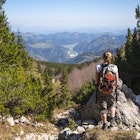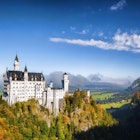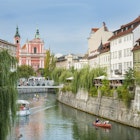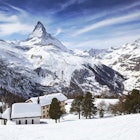A German-speaking bit of Italy, the South Tyrol is a region with a dual identity. But there’s one thing locals know for sure, and that’s how to make the most of autumn.

On his family’s farm high in the Dolomites, white clouds suspended between the mountaintops like spiders’ webs, Stefan Winkler is roasting chestnuts. Wielding a cast-iron pan over a flaming brazier, he flips the nuts to ensure they’re cooked evenly, watching their skins blacken and char in the flames, cracking to reveal buttery yellow beneath.
‘It’s important that we get them just right,’ says Stefan. ‘Chestnuts are an essential part of Törggelen.’ Such harvest feasts have been a tradition in the mountains of South Tyrol (Südtirol) since at least the 16th century, when travelling merchants would visit the region’s farms and vineyards to taste the year’s produce. Keen to show off their goods, farmers would host banquets in their honour – no doubt hoping the well-oiled merchants might buy a few extra crates of grapes or barrels of wine in the process.
Visitors to the region are still offered a warm welcome at farms like the Winklers’, which offers meals to paying guests during the autumn months. Their simple white farmhouse is festooned with decorations: the doorstep is piled with pumpkins and wicker baskets brimming with apples, and wreaths of corn dangle from the shutters.

Inside, the festivities are well under way. A motley mix of diners – families, tourists, locals, motorbikers, cyclists and hikers – cram around long wooden tables in the pine-clad dining room, warmed by an earthenware stove. On one table, a family dip into bowls of barley soup with chunks of schüttelbrot: the flat bread traditionally carried by Tyrolean shepherds. In another corner, a band of bearded Bavarian hikers tucks into roast pork, sausages and thick slices of speck (cured ham), laced with homemade horseradish sauce and sauerkraut. This is a classic Törggelen dish, known as a schlachtplatte or slaughter plate. It’s an unappetising name, but accurate; half the farmyard seems to be piled on it.
Soon, flagons of beer and jugs of wine arrive, poured by smiling waitresses dressed in the figure-hugging bodices known as dirndls: traditional Germanic peasant costumes with plunging necklines. Diners hand round glasses and exchange tales of their day’s adventures. One recounts their afternoon picnic beneath the Dolomites’ peaks; another recalls the tang of home-brewed apple juice sampled at a local farm. Sipping his beer and wielding a sausage, a man in a leather jacket describes a near-miss on his bike with a dairy cow, joking that it almost ended up on tonight’s schlachtplatte.

After the main course, bowls of Stefan’s freshly roasted chestnuts arrive to rowdy applause. The guests peel off the hot husks by hand. From somewhere an accordion appears and the room erupts with old folk tunes. Everyone joins in with gusto, although only a few people know the words. More chestnuts arrive, more wine is poured. Outside, dusk melts into darkness, and the party continues into the night.
It’s past the witching hour when Stefan waves goodbye to the last of his guests. ‘This is what Törggelen is about,’ he says. ‘It’s a time of sharing, when we enjoy each other’s company and celebrate the fruits of the harvest. It’s been a tradition here for so long, it’s hard to imagine autumn without it.’
The word ‘Törggelen’ is thought to derive from the wooden presses once used to extract wine, known in Latin as torcolum and törggl in local dialect. Although much has changed in the mountains, the tradition has endured. Südtirolers still attend Törggelen two or three times a season – once with friends, once with family, once with colleagues – and many inns, farmhouses and hostelries across South Tyrol still host these harvest banquets in the old-fashioned way.
At Agriturismo Lafoglerhof, about 20 miles outside Bolzano (Bozen), every table is full, and the waitresses are working overtime, topping up jugs of wine, pulling pints of pilsner, preparing platters laden with meat, cheese and sauerkraut. Children chase each other around the farmyard, dodging old barrels and strutting chickens, and their parents chink glasses with a gutsy ‘Grüß Gott’, the customary greeting of South Tyrol. ‘Autumn is a special time,’ says hostess Claudia Rier. ‘For me, it sums up the best things in life: food, laughter, spending time with people you love. I don’t think you can ask for more than that.’ But of course there is more: the magnificent backdrop to the celebrations, the Dolomites, slicing through South Tyrol like a dragon’s jawbone.

The best way to combine this scenery with South Tyrol’s harvest-time hospitality is to follow the Keschtnweg or ‘Chestnut Way’, a 38-mile trail that winds along the Isarco Valley (Eisacktal) between the towns of Bressanone (Brixen) and Bolzano. It’s named after the old chestnut groves which carpet the hillsides, planted by Roman settlers 2,000 years ago, and has been tramped by shepherds, pedlars and pilgrims for centuries. Once the quickest path across the Alps, it takes around five days to complete – although during Törggelen season, the temptation of stopping for another mountain feast means it often takes considerably longer than planned.
What soon becomes apparent to Keschtnweg hikers is South Tyrol’s split personality. One minute the views appear Alpine: green fields, grazing cows, geranium-covered houses. The next, things turn Italian: saintly icons, tumbledown churches, hilltop monasteries. In one hamlet, the church might be dedicated to St Jakobus or St Georg; in the next, it might be Santa Maddalena or Sant’Angelo. Stop in at one bar and you’ll be served a shot of grappa; at the next it’s as likely to be a glass of schnapps.
Though it’s been a province of Italy since 1919, for much of its history the region was part of the Austrian empire. This is a place that still teeters between two cultures. Two-thirds of people identify German as their mother tongue; another quarter speaks Italian, while a further five per cent speak Ladin, an old Romance language believed to have its roots in the patois of Roman legionaries. Road signs are always in two languages, sometimes three. Every village has both a German and an Italian name, and this is surely the only corner of Italy where locals are equally happy to sit down for a bowl of dumplings as they are to a bowl of ravioli.
‘You could say all Südtirolers have two nationalities,’ says Maria Gall Prader, an art historian who supplements her income guiding people along the area’s hiking trails. She spreads out bread, sausage and cheese on a picnic blanket in a chestnut grove near the village of Velturno (Feldthurns), about 10 miles from the northern end of the Keschtnweg near Bressanone. ‘Sometimes we eat bread, sometimes pasta. We like wine as much as beer. Some people speak Italian at home, some people German,’ she says. ‘But when it comes to politics everyone wants something different. It’s always been that way and will surely never change.’ Around her the landscape is fiery with colour – golds, crimsons, pinks and oranges, mottled greens and tawny browns – and dry leaves snap and rustle underfoot.

After lunch, Maria makes a beeline for Radoar-Hof, one of the area’s renowned organic apple farms. Owner Norbert Blasbichler is pouring out glasses of juice and grappa for his guests at a wooden table in the garden. It’s surrounded by terraces of fruit trees, stretching away in orderly lines and laden with apples, pears, quince and berries, ripe and ready for harvest, which Norbert reckons is just a week away. He pours out an early taste of this year’s juice: it’s sweet, floral and fruity, with a rich perfume and a twist of acidity that comes from a blend of apple varieties. ‘Blending is an art, like winemaking,’ he says. ‘Every year we have different levels of sugar and acidity in the fruit, which means the juice tastes slightly different. That’s where the skill comes in,’ he says, tapping a finger to his nose.
‘Now, come, please – eat, drink! You can’t walk on an empty stomach,’ says Norbert, laying down a platter of bread and cheese, which is eaten to the bassy drone of the orchard’s honeybees and the sputter of a tractor in a nearby field.
Food is a cornerstone of life in South Tyrol and hiking the Keschtnweg reveals a landscape shaped by agriculture: vines climb the slopes; barns stand in fields of barley; plump cows graze. The region owes its productivity to the climate. The Isarco Valley occupies a buffer zone between the mountains and the sea, benefiting from warm, moist air from the Mediterranean to the south, and cool, dry air from the Alps to the north.
Every inch of land is used for something – all but the mountains themselves that is. The Dolomites are an inescapable presence along the Isarco Valley. Known as the Monti Pallidi, the Pale Mountains, a reference to their milky-white colour, they’re a reminder of the wild world that lies beyond the neatly tended fields. Towering above a pastoral patchwork of villages, meadows and farms, the summits spike the skyline like wolves’ teeth.

As the sun sinks low over the valley, the rocks shift colour, from diamond white to coral pink and copper gold. Seen in the half-light of dusk, it’s easy to know why the locals once believed these mountains to be inhabited by witches, trolls, giants and ghosts. It’s a place where magic seems not just possible, but probable.
At the southern end of the valley, as the Keschtnweg nears its end just outside Bolzano, the region’s Italian side comes ever more into focus. Italianate villas appear. Barley fields become vineyards. Temperatures warm and accents soften. There’s also a crispness in the air that hints of autumn’s end – and for winemakers like Florian Gojer, that also means the harvest is drawing to a close.
In his late twenties, with fair skin and a swash of auburn hair, Florian is the latest in a dynasty of Tyrolean winemakers. He looks after the 5,000-hectare family vineyards close to Bolzano. ‘My grandfather and father established the vineyards, and I’ve never thought of doing anything else,’ he says.
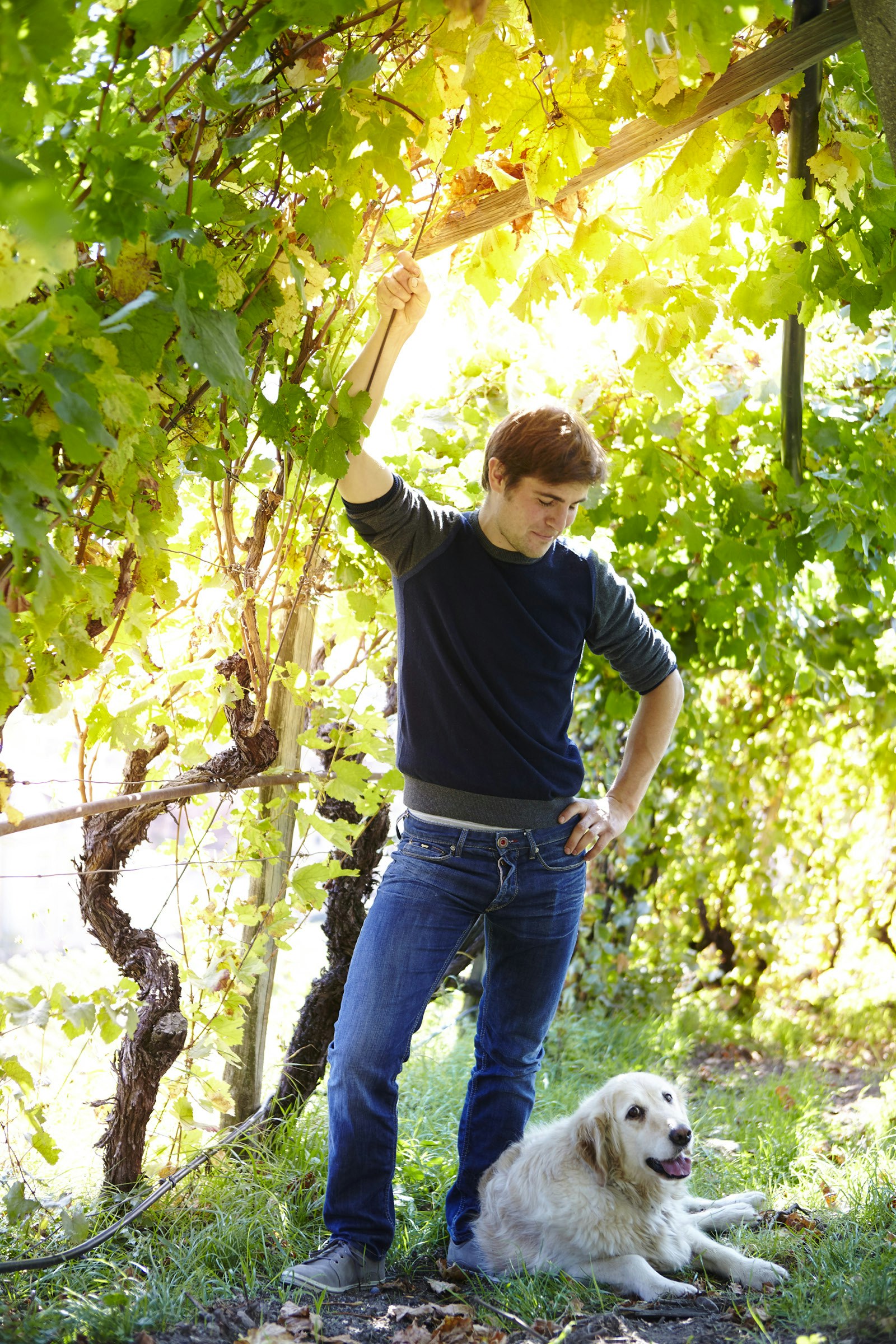
‘We’re lucky,’ says Florian, wandering among his workers as they snip off the year’s final flush of grapes. ‘We have so many aspects, altitudes, temperatures and soils, we can grow almost any grape we want here. It’s the perfect place to be a winemaker.’
He sets up a table high in the vineyard, overlooking Bolzano’s terracotta rooftops. From a satchel, he produces two bottles of wine: a white kerner and a lagrein red, both signature grapes of South Tyrol. The white is crisp and mineral-rich, the red perfumed and fruity. ‘Törggelen is our Thanksgiving,’ says Florian, taking a sip of wine. ‘That’s why it has lasted as a tradition.’ He smiles and heads off to fetch another bottle of wine.
Beyond the vineyard’s terraces, bare trees stretch out along the backroads, and clouds of fallen leaves rattle and swirl in the breeze. Above, the sun is sinking behind the Dolomites, and the summits sparkle with the first dusting of snow. Winter is coming to the mountains, but for now at least, there are a few more days of autumn to enjoy.
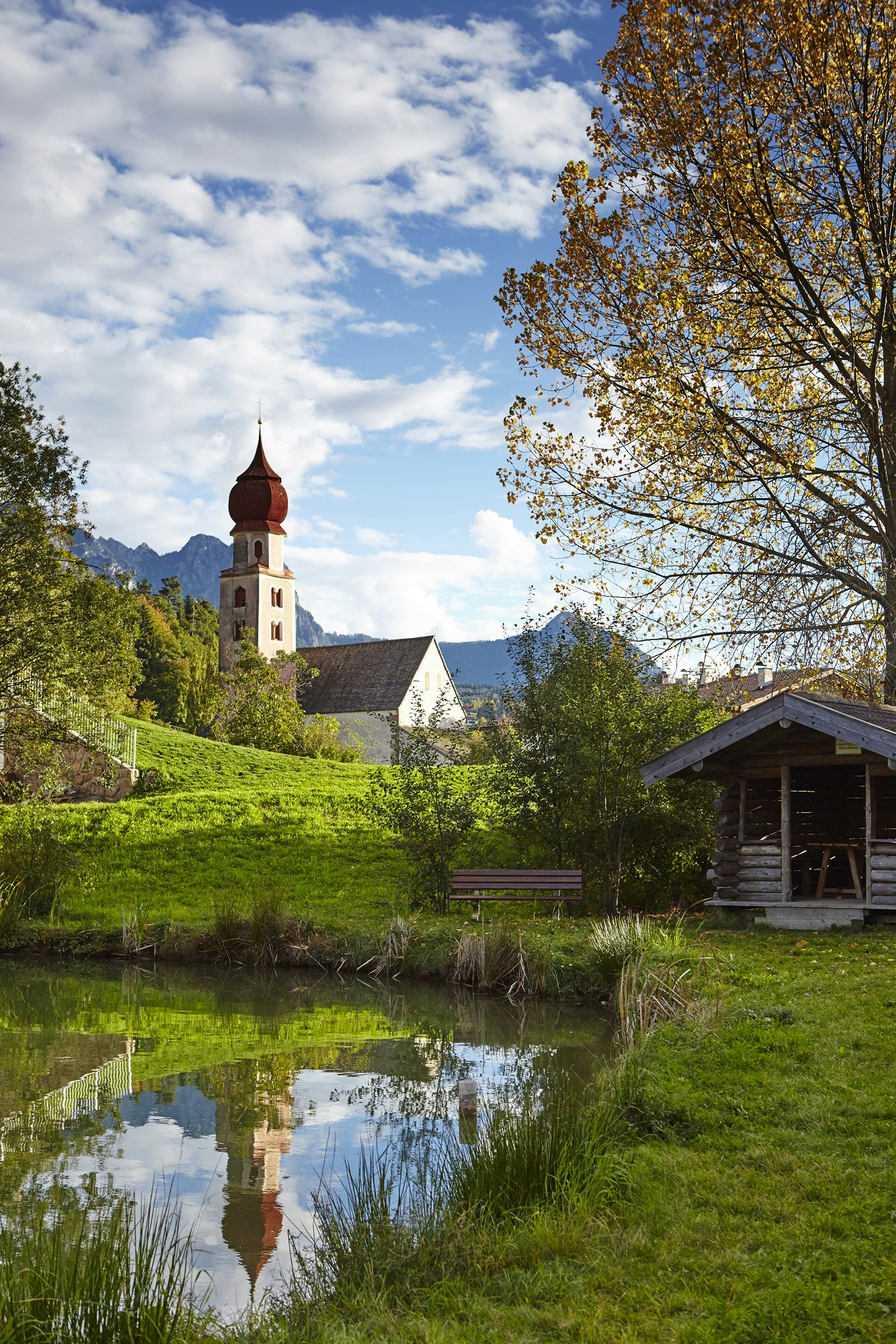
Getting to South Tyrol
The nearest airport serving Bolzano is Verona, a two-hour drive away. Alternatives are Venice and Innsbruck in Austria.
Booking Törggelen
The South Tyrol tourist board has a list of farms offering Törggelen feasts. You can book with each farm directly, or through the tourist board or the place you’re staying. The feasts include several courses and there’s often after-dinner entertainment.
Hiking and equipment
Though the hiking is not hard and the Keschtnweg trail is well maintained, there are some steep and uneven sections, so hiking boots are essential. Most hotels have contacts with local guides, but you really don’t need one; the route is well signposted. If you don’t want to carry your gear, luggage transfers can be arranged with a local taxi company through your hotel (cost depends on distance).
Plan your hike
1) Most people hike the Keschtnweg in a north-south direction, starting from Bressanone (Brixen). Fortify yourself for the journey at Novacella Abbey, the region’s most renowned vineyard, which has been making wines since the Middle Ages. Here you can take a guided tour before tasting local vintages such as kerner and lagrein.
2) Hotel Unterwirt in the village of Velturno (Feldthurns) makes a good base from which to set out. Its rooms are modern with valley views, but the rest of the hotel is decorated in traditional Alpine style, and there’s a restaurant serving hearty local dishes like knödel (dumplings), and spinach and ricotta ravioli.
3) The Keschtnweg runs through Velturno on its way to Chiusa (Klausen), about eight miles away on foot. Along the way, stop for apple juice, schnapps and meat-and-cheese platters at Radoar-Hof, and visit the hilltop convent of Sabiona.

4) The Winklers’ family farm, Larmhof, is in the hills near Villandro (Villanders), five miles or so southwest of Chiusa. They serve classic Törggelen feasts throughout the autumn inside the farmhouse, with its wood-panelled dining room and traditional clay stove. Afterwards you can peek inside the historic haybarn, watch the cows being milked and help Stefan roast chestnuts.
5) High above Barbiano (Barbian), the Hotel Briol is designed in the Bauhaus style, with an emphasis on clear lines and austere simplicity. The views over the Isarco Valley and Dolomites are sensational. It’s not possible to arrive by car due to the steep track; arrive on foot, or arrange a 4WD transfer from Barbiano.
6) It’s worth detouring from the Keschtnweg for a day to explore the Alpe di Siusi (Seiser Alm), Europe’s largest mountain plateau, famous for summer hiking and winter skiing. Marked trails cross the slopes to local landmarks such as the rock formations known as the Witches’ Benches and the mountain lake of Laghetto di Fiè.
7) Back on the trail, the next stop is the Renon (Ritten) plateau, a 12-mile hike from Barbiano. Hotel Bemelmans-Post in Collalbo (Klobenstein) makes a good stopover. Its rooms are named after composers, and many have fantastic views of the Dolomites.
8) The trail comes to its official end 10 miles further on in Bolzano, next to Runkelstein Castle, a 14th-century palace decorated with spectacular medieval frescoes depicting jousting, dancing and courtship.
9) In Bolzano, Parkhotel Laurin makes a luxurious end to the Keschtnweg trail. This grand city-centre hotel was built in 1910, and has rooms that look out over a park. There’s also a wood-panelled Art Deco bar and restaurant. Chef Manuel Astuto is known for exciting dishes, such as homemade tortellini with octopus and sweet potato, and marinated squid with beans.

